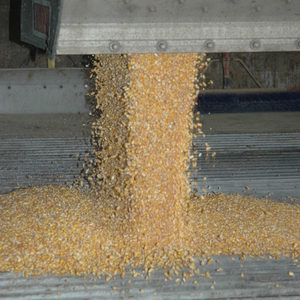Corn crush, DDGS production down slightly in January

Sue Retka Schill
March 4, 2015
BY Susanne Retka Schill
Corn consumed for fuel ethanol was 445.7 million bushels in January, down 2 percent from December, but up 3 percent from November. Dry mills used 89.3 percent of that, while wet milling fuel production consumed the remaining 10.7 percent. Corn consumption for other than fuel production totaled 43.4 million bushels, for a total corn use for industrial purposes of 497.3 million bushels in January.
Sorghum use for alcohol production was withheld for January to avoid disclosing data for individual operations. It had been 889,000 hundredweight in December and 2 million hundredweight in November.
The industrial use figures were the first regular monthly release from the new survey-based Grain Crushing and Co-Products Production report from the National Agriculture Statistics Service’s Current Agricultural Industrial Reports program. NASS launched the new survey-based report in mid-February, giving results from the last quarter of 2014.
Advertisement
The March report showed dry mill DDGS was 1.86 million tons during January, down 3 percent from December, but up 5 percent from November. Distillers wet grains (65 percent or more moisture) was 1.34 million tons in January, down 5 percent from December and down 1 percent from November. Other coproduct production figures for January include condensed distillers solubles (CDS or syrup) at 162,626 tons, corn oil at 105,356 tons, DDG at 438,936 tons and modified DWG (40-64 percent moisture) at 480,134 tons. Carbon dioxide capture at both dry and wet mills totaled 193,097 tons.
Wet mill corn gluten feed production was 321,800 tons during January, down 2 percent from December, but up 9 percent from November. Wet corn gluten feed (40-60 percent moisture) was 313,400 tons in January down 7 percent from December and down 1 percent from November.
Advertisement
Related Stories
At the University of Missouri, plant biochemist Jay Thelen is using arabidopsis as a powerful model to explore ways to boost oil production — an important step toward creating more sustainable, plant-based energy sources.
Iowa farmers have a new market opportunity for their 2025 soybean crop. Landus is expanding its Clean Fuel Regulation initiative, made possible by recent policy changes expected to increase Canada's demand for liquid biofuel.
Topsoe, a leading global provider of advanced technology and solutions for the energy transition, has been selected as the renewable diesel technology partner for CountryMark’s Mount Vernon, Indiana refinery.
The U.S. exported 35,953.6 metric tons biodiesel and biodiesel blends of B30 or greater, according to data released by the USDA Foreign Agricultural Service on Aug. 5. Biodiesel imports were at 2,148.9 metric tons for the month.
XCF Global leverages Alfa Laval technology to enhance pretreatment capabilities at New Rise Reno facility
XCF Global Inc. on Aug. 5announced it leverages Alfa Laval Inc. pretreatment technology at its New Rise Reno biorefinery, a sustainable aviation fuel (SAF) plant located in Nevada. The pretreatment technology enhances feedstock flexibility at the plant.
Upcoming Events










